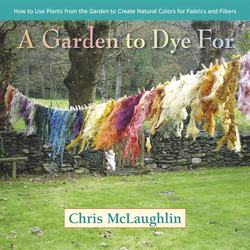Читать книгу A Garden to Dye For - Chris McLaughlin - Страница 8
На сайте Литреса книга снята с продажи.
Some Key Words You’ll Come Across in the Book
ОглавлениеColorfast (lightfast and washfast). Generally, when we say something is “colorfast” we mean that the color sticks to the fiber and doesn’t fade much. But for clarity’s sake, we should also be using the terms “lightfast” (retains its color after being exposed to light regularly) and “washfast” (retains its color after being washed). A color might be one and not the other.
Dye pot or dyebath. The pot or container that you soak your fiber or fabric in, which also contains the plant materials (or color derived from said plant material).
Fugitive. A “fugitive dye” describes a color that simply isn’t going to stay on fiber or fabric for any length of time. Good examples would be color from berries and black beans. Fugitive dyes are generally most useful for projects that aren’t expected to have lasting color, such as Easter eggs or homemade playdough.
Modifier. This is a solution used either before or after dyeing in order to brighten, darken, or otherwise change the original color obtained on the fiber. Examples: washing soda and iron (which also happens to be a mordant; see below).
Mordant. A mordant is a metallic compound that’s used to help bind the color to the fiber or fabric. Examples: alum, copper, tin, chrome or iron. Mordants can also be found in plants. Plant-based mordants, like acorns, oak galls, and sumac leaves are used as well. Mordants aren’t necessary for natural dyeing, but are usually desired.
Reactive pot. Pots that are made out of aluminum, iron or copper can cause a color reaction with the color, mordant or modifier. This reaction will alter the colors of the dye. Stainless steel, glass and ceramic are all non-reactive pot materials.
Rogue. This isn’t necessarily a dye word. I use it as a term to describe any color that shows up other than the one you were expecting. Example: “Colors can go rogue on you.”
Scouring. Scouring is about removing any residues found on the fiber or fabric, whether this means grease or lanolin from the animal or oils, finishes, or chemicals that were added by a manufacturer. The layman’s term for scouring is “washing.”
Textiles. When I use the word “textiles” as a catch-all word, I’m referring to fabric, fiber and anything else that can be dyed.
